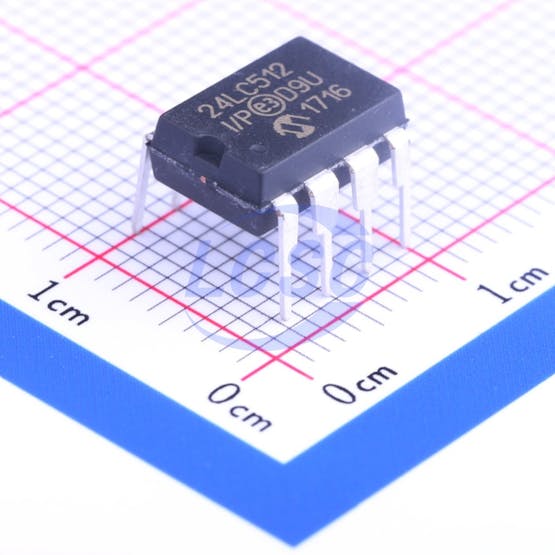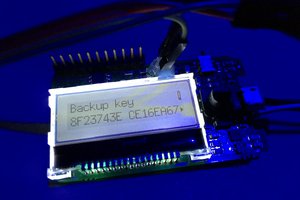EEPROM stands for Electrically Erasable Programmable Read-Only Memory.
This project is sponsored by LCSC. I have been using electronic components from LCSC.com. LCSC has a strong commitment to offering a wide selection of genuine, high quality electronic components at best price with a global shipping network to over 200 countries. Sign up today and get $8 off on your first order.
EEPROM is also very efficient in that individual bytes in a traditional EEPROM can be independently read, erased, and rewritten. In most other kinds of non-volatile memory, this can't be done.
Serial EEPROM devices like the Microchip 24-series EEPROM allow you to add more memory to any device that can speak I²C.

EEPROM - 24LC512
EEPROM Basics
The Microchip 24LC2512 chip can be purchased in a 8 pin DIP package. The pins on the 24LC512 are pretty straight-forward and consist of power(8), GND(4), write protection(7), SCL/SDA(6,5), and three address pins(1, 2, 3).
A Brief History of ROM
Early "Stored-Program" type computers — such as desk calculators and keyboard interpreters — began using ROM in the form of Diode Matrix ROM. This was memory made up of discrete semiconductor diodes placed on a specially organised PCB. This gave way to Mask ROM with the advent of integrated circuits. Mask ROM was a lot like Diode Matrix ROM only it was implemented on a much smaller scale. This meant, however, that you couldn't just move a couple of diodes around with a soldering iron and reprogram it. Mask ROM had to be programmed by the manufacturer and was thereafter not alterable.
Unfortunately, Mask ROM was expensive and took a long time to produce because each new program required a brand new device to be manufactured by a foundry. In 1956, however, this problem was solved with the invention of PROM (Programmable ROM) which allowed developers to program the chips themselves. That meant manufacturers could produce millions of the same unprogrammed device which made it cheaper and more practical. PROM, however, could only be written to once using a high-voltage programming device. After a PROM device was programmed, there was no way to return the device to its unprogrammed state.
This changed in 1971 with the invention of EPROM (Erasable ProgrammableROM) which — besides adding another letter to the acronym — brought with it the ability to erase the device and return it to a "blank" state using a strong UV light source. That's right, you had to shine a bright light on the IC to reprogram it, how cool is that? Well, it turns out it's pretty cool unless you're a developer working on firmware in which case you'd really like to be able to reprogram the device using electrical signals. This finally became a reality in 1983 with the development of EEPROM (Electrically Erasable Programmable ROM) and with that, we arrive at the current day unwieldy acronym.
Quirks of EEPROM
There are two major drawbacks to EEPROM as a method of data storage. In most applications the pros outweigh the cons, but you should be aware of them before incorporating EEPROM into your next design.
First of all, the technology that makes EEPROM work also limits the number of times that it can be re-written. This has to do with electrons becoming trapped in the transistors that make up the ROM and building up until the charge difference between a "1" and a "0" is unrecognisable. But don't worry, most EEPROMs have a maximum re-write number of 1 million or more. As long as you're not continuously writing to the EEPROM it's unlikely you'll hit this maximum.
Secondly, EEPROM will not be erased if you remove power from it, but it won't hold onto your data indefinitely. Electrons can drift out of the transistors and through the insulator, effectively erasing the EEPROM over time. That said, this usually occurs over the course of years (although it can be accelerated by heat). Most manufacturers say that your data...
Read more »

 Timo Birnschein
Timo Birnschein

 teardownit
teardownit
I need to capture 2 channels of 12 bit data simultaneously with a 512k capacity, minimum.
& the data needs to be captured live, as it comes in.
I then need to "replay it" at the same rate it entered! or vary the output rate.
Tricky.. clues?